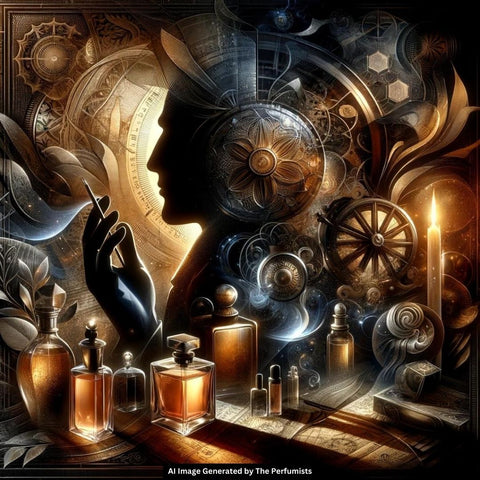Why Perfumes Exhibit Racial Traits, and How to Harness Them for Your Benefit
Delving into a somewhat contentious realm, one often skirted around in polite conversation, "The Perfumist" is unbound by such constraints, delving deeply into the world of scents and fragrances.
To dissect this inquiry, we must first grasp the rudiments of evolution, the quintessence of our being that defines us.

At its core lies the understanding that all scents, be they enchanting, repugnant, or downright foul, are intricately woven into our DNA. Millennia of evolution have woven a embroidery of experience and knowledge into our minds and bodies, a collective wisdom passed down through generations. What we like or not like some may say hate, often beyond conscious realization, is deeply rooted in our genetic programming, shaped by the preferences and aversions of our ancestors. Remarkably, scent played a pivotal role in life-or-death decisions and mate selection, a fact often overlooked by modern sensibilities.
Perfumery, then, becomes the canvas upon which these primal preferences are written. It is the amalgamation of various scent structures, notes, and accords layered intricately within a liquid formulation, called perfume or parfum.
Throughout history, certain peoples, cultures, and ethnicities have gravitated towards specific scents and aromas. Consider the ancient Babylonians, who crafted incense as offerings to their deities, laying the groundwork for a tradition that crossed eras, from Egypt to Greece, Rome, and beyond. Even today, the epicenter of incense consumption remains rooted in the cradle of its inception—no mere coincidence, but a testament to the enduring influence of ancestral preferences, our love for the scent or the incense.
Take, for instance, oud, renowned for its potent, earthy allure. The origin of its distillation can be traced back to China and India, where centuries ago, artisans dedicated themselves to extracting the essence of agarwood. Yet, the distinctions of their creations depart: while Indian oud exudes a primal, animalistic fervor, redolent of the spices that permeate its culinary landscape, its Chinese counterpart assumes a more herbal, medicinal character, echoing the nation's fondness for herbal remedies. Here, the intricate dance between scent and culture unfolds, each informing and shaping the other in a symphony of olfactory artistry, the master are playing so listen!

Similar narratives unfold across the globe, each scent cherished or reviled based on the interplay of taste, diet, environment, and heritage. Consider the Arabian world, where oud, musk, and agarwood reign supreme, their heady, intoxicating notes weaving tales of opulence and tradition, old heritage and a search for power and wealth. Despite the absence of these botanicals within the region, their prevalence in Arabian perfumery underscores the profound impact of environment and cultural heritage on scent preferences, the desert all its emptiness and all its wealth, a yin and yang expressed in the scent of it’s own people.
The African continent, cradle of humanity, gives unto the world an olfactory textile as rich and diverse as its landscapes. Here, resins and spices intermingle in a concerto of complexity, mirroring the continent's fertility and vibrancy, the loving mother and the rich land.
And what of Europe, where France ascended to the throne of perfumery? The answer lies not merely in mastery of technique, but in necessity born of uncleanliness. In an age when open sewers lined the streets and hygiene or simi-Hygiene was a luxury afforded by the elite, perfume emerged as a beacon of refinement among the stench of urban decay. Thus, France, with its unpalatable boulevards and stark class divides, became the crucible in which perfumery flourished, a testament to human ingenuity amidst adversity, a testament for the beauty in the mind of the French perfumist against all the odds.
Indeed, the art of perfumery transcends mere aesthetics, its tendrils reaching deep into the chronicles of history, culture, and biology. When crafting scents for diverse audiences, master Perfumists investigate into the intricacies of racial and cultural profiles, tailoring their creations to resonate with the shades of individual experience. Whether in a boardroom negotiation or a chance encounter abroad, the choice of scent becomes a potent tool for forging connections and bridging divides, nothing can talk more about a person that their scent, a wristwatch can be fake or not of a monetary value, a clothes can be settled or non-informing, a shoe can be relaxed and comfortable against the advice of many designers, but a scent! A scent doesn’t lie, a scent doesn’t hide, a scent say a thousand word without even speaking this is the power of a masterfully made aura, no I’m not talking about wizardry I’m talking about scent!
In closing, let us embrace the diversity of scent, celebrating the myriad expressions of human experience encapsulated within each bottle. By sharing our knowledge and appreciation of perfumery, we foster a deeper understanding of our shared humanity, enriching our lives with the beauty of difference."
Ali Attar